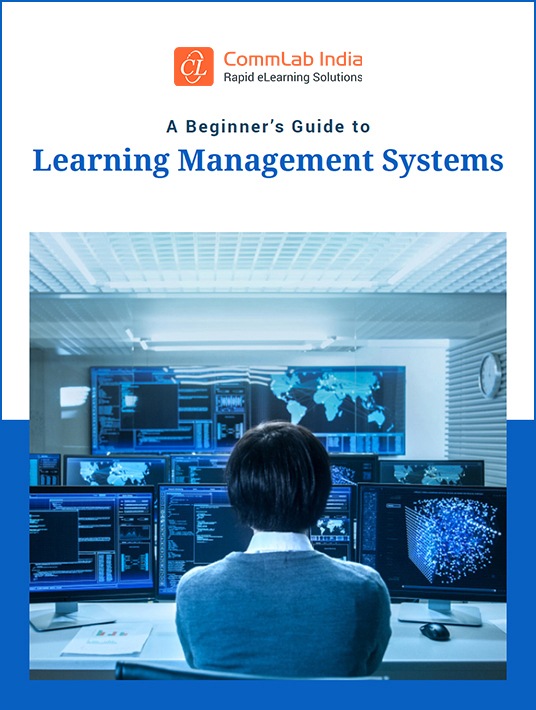How Did The LMS Take The Form We Know
Before we start our journey in LMS History, let us remind ourselves what an LMS is. Simply put, an LMS or Learning Management System is a software application that helps with the management of digital training content. Its name itself spells out its key characteristics:
- Learning: A single repository for all your learning material, which learners can access 24×7.
- Management: An organized system of managing training processes (e.g. user registrations, course assignments) for eLearning, virtual, and in-person sessions.
- System: To automate tasks such as tracking and reporting learner activities, processing stats, generating reports, grading assessments, creating and awarding certificates, and more.

The LMS had an amazing journey so far. Let us explore how the LMS has evolved, starting from the 1920s and leading up to this day.
Important Milestones In LMS History
First developed by Sidney L. Pressey, the Teaching Machine offered various kinds of practical exercises and multiple-choice questions (MCQs). Resembling a typewriter, the machine required learners to drill in answers, which were recorded. The learner could only advance if their response to the previous question was correct—a feature most of the modern LMSs still use.
Milton Ezra LeZerte created the Problem Cylinder, a device that provided instruction without the need for an instructor’s intervention. One of the great features of the problem cylinder was that it not only tested learners’ knowledge with MCQs but also checked their responses—whether right or wrong, thereby saving the instructor’s time
The University of Houston, USA, televised the first for-credit college course for people to learn right from the comfort of their homes. Video lectures/lessons were aired every evening so everyone — including full-time workers — could benefit from the lessons, ensuring learning was not compromised because of work commitments
SAKI, in a way, was the first machine to offer learning that felt mildly personal. Short for Self-Adaptive Keyboard Instructor, SAKI was pioneered by Gordon Pask and McKinnon Wood, offering personalized practice questions based on the learner’s performance. As their performance improved over time, SAKI would ‘learn’ and increase the complexity of subsequent questions.
The next big thing in LMS history was the invention of PLATO (Programmed Logic for Automatic Teaching Operation) by Dr. Donald Bitzer. PLATO was a computer-based training program that facilitated self-paced learning, allowing learners to monitor their own learning progress. It also gave the learning community its first taste of social/ collaborative learning. Thanks to its host of networks, learners could interact with other learners using instant chat/messaging, email, and chat rooms.
The HP-9100A was Hewlett-Packard’s first calculator, packed with never before seen computational abilities. It could process and solve engineering problems 10 times faster than existing machines. The HP-9100 laid the foundation for the way connections are established today via the Internet, and essentially paved the way for the everyday use of the LMS.
Almost a forerunner to the LMS, MIT’s Project Athena attempted to extend the use of computer machines beyond general science and engineering. Project Athena made it possible for learners and instructors to access their files from any workstation/desktop computer on the MIT campus.
The first open-source LMS, Moodle (Modular Object-Oriented Dynamic Learning Environment) was introduced. With Moodle, learners could start learning as soon as they downloaded the application onto their desktops. Personalized learning was made possible by letting learners choose the content they wished to store or export. Moodle’s plug-and-play functionality meant that training content could be delivered to the learner faster and at less cost.
The messaging standard, SCORM (Sharable Content Object Reference Model), was introduced, specifying the parameters on content packaging and metadata — a staple feature of today’s LMS.
Experience API aka xAPI, an eLearning specification, was developed as a successor to SCORM. It allowed “learning content and learning systems to speak to each other in a manner that records and tracks all types of learning experiences.
The Modern History Of The LMS
There are a couple of reasons why traditional LMSs were replaced by the new generation ones.
- The new-age, millennial learner forced changes not just in the LMS but in corporate training as well.
- Ever-growing, ever-expanding businesses, and their workforces – spreading far into different parts of the world – demanded a shift in how LMSs helped them manage training.
The modern LMS is designed to meet the demands of the modern learner and to support the training needs of a global workforce.
Unlike traditional LMSs, modern LMS can:
- Deliver a wide variety of training material in different formats, giving learners complete control over what and where they wish to learn.
- Support gamification in the form of badges, points, and leaderboards to drive learner motivation.
- Host chat rooms and messaging forums for learners to collaborate and learn from peers, enabling social learning.
- Facilitate learning on-the-go in informal environments, giving access to the required content at the click of a button.
- Report and track how learners are doing and the impact of the training, to take measures to ensure better learner management.
- Leverage tracking data to provide personalized learning paths based on learners’ job roles and level of existing knowledge.
Conclusion
Would you like to learn more about how to select the right LMS? Get the eBook A Beginner’s Guide To Learning Management Systems and prepare for this important decision.








